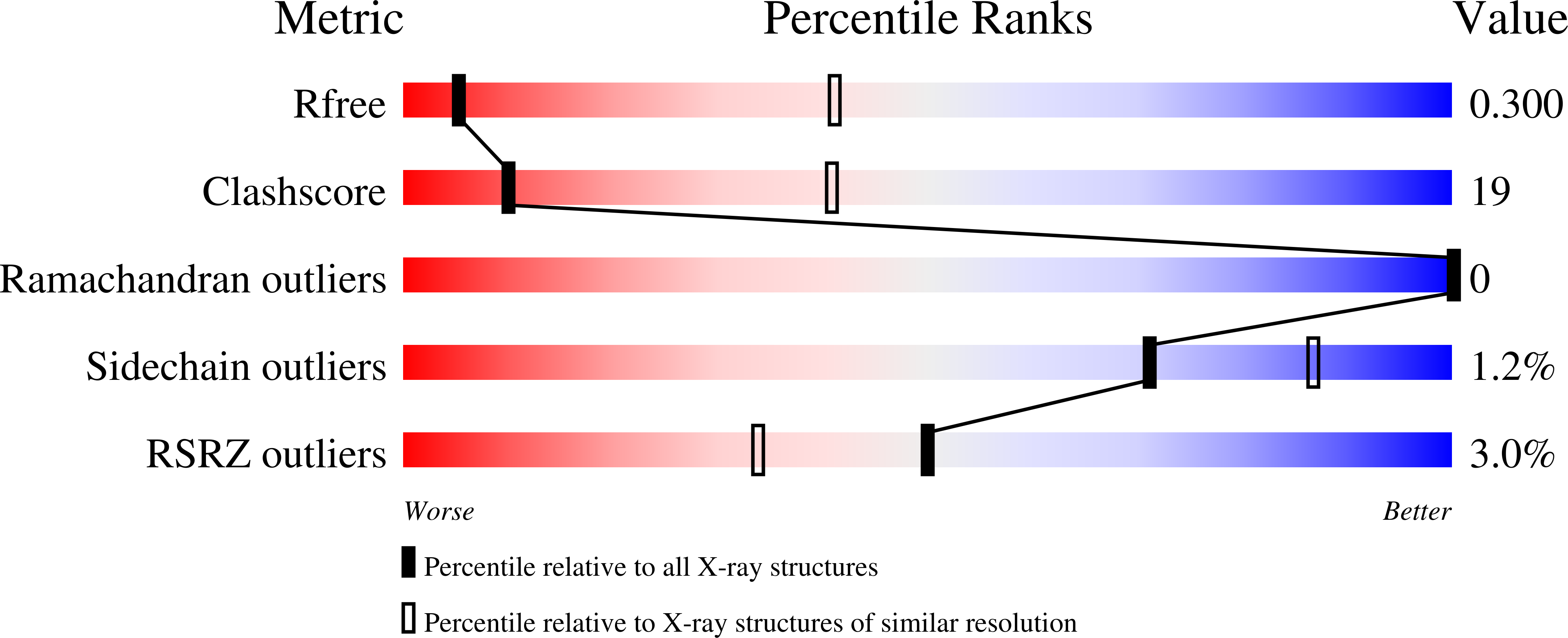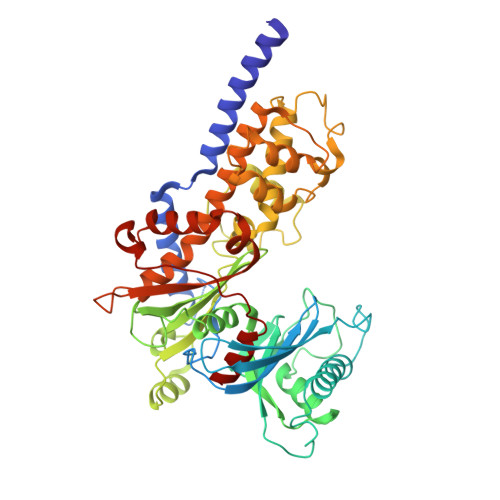Polymerization in the actin ATPase clan regulates hexokinase activity in yeast.
Stoddard, P.R., Lynch, E.M., Farrell, D.P., Dosey, A.M., DiMaio, F., Williams, T.A., Kollman, J.M., Murray, A.W., Garner, E.C.(2020) Science 367: 1039-1042
- PubMed: 32108112
- DOI: https://doi.org/10.1126/science.aay5359
- Primary Citation of Related Structures:
6P4X, 6PDT - PubMed Abstract:
The actin fold is found in cytoskeletal polymers, chaperones, and various metabolic enzymes. Many actin-fold proteins, such as the carbohydrate kinases, do not polymerize. We found that Glk1, a Saccharomyces cerevisiae glucokinase, forms two-stranded filaments with ultrastructure that is distinct from that of cytoskeletal polymers. In cells, Glk1 polymerized upon sugar addition and depolymerized upon sugar withdrawal. Polymerization inhibits enzymatic activity; the Glk1 monomer-polymer equilibrium sets a maximum rate of glucose phosphorylation regardless of Glk1 concentration. A mutation that eliminated Glk1 polymerization alleviated concentration-dependent enzyme inhibition. Yeast containing nonpolymerizing Glk1 were less fit when growing on sugars and more likely to die when refed glucose. Glk1 polymerization arose independently from other actin-related filaments and may allow yeast to rapidly modulate glucokinase activity as nutrient availability changes.
Organizational Affiliation:
Department of Molecular and Cellular Biology, Harvard University, Cambridge, MA 02138, USA.















